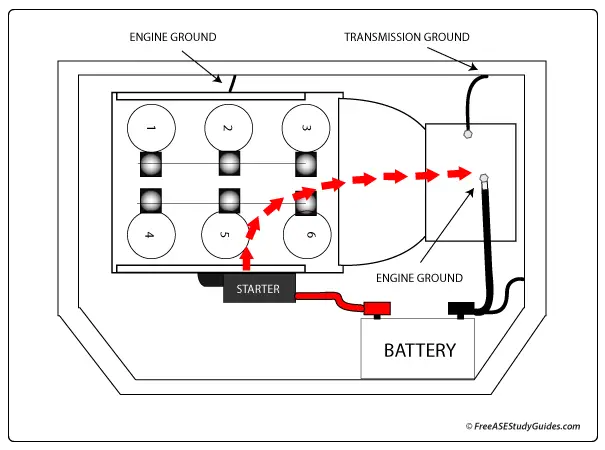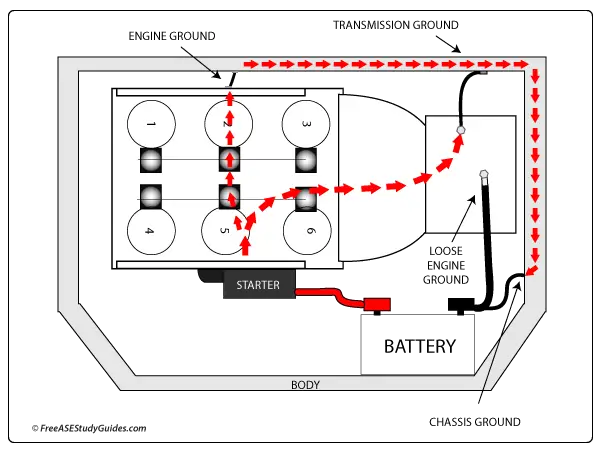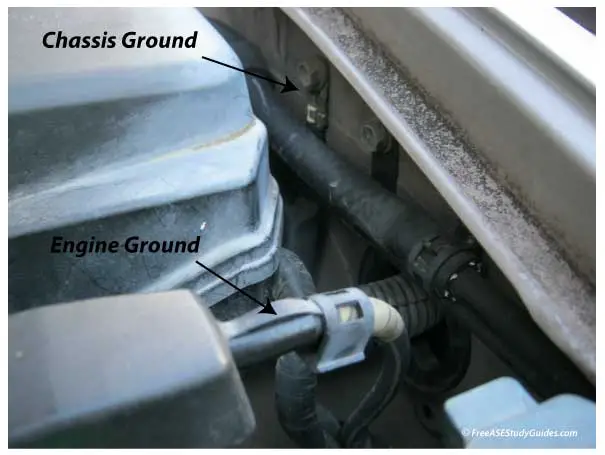Loose Starter Ground Connection

When starting an engine, high current travels through the engine and ground cable before flowing back into the battery. Electricity always seeks the easiest path to ground. A loose engine ground cable will cause excessive current to flow through smaller engine and transmission grounds on its way back to the battery.

These grounds are of a smaller gauge and can break, blister, and swell from the excessive current. When an engine starts, the current that usually flows through the engine ground cable is routed through the body ground instead. Excessive current in any cable or wire can cause extreme heat, overpowering the cable and blistering the cable's insulation.

The engine ground cable provides a ground path for the high-current starter motor. The body ground is of a smaller gauge and provides a ground for the vehicle's accessories. Resistance in the body ground can prevent the operation of an accessory.

Measure the resistance in the circuit with a DMM voltage meter. Performing a voltage drop test is the fastest and easiest way of determining if there is excessive resistance in a circuit. Voltage drop tests are ideal because the component does not need to be disconnected; the leads are connected in parallel.